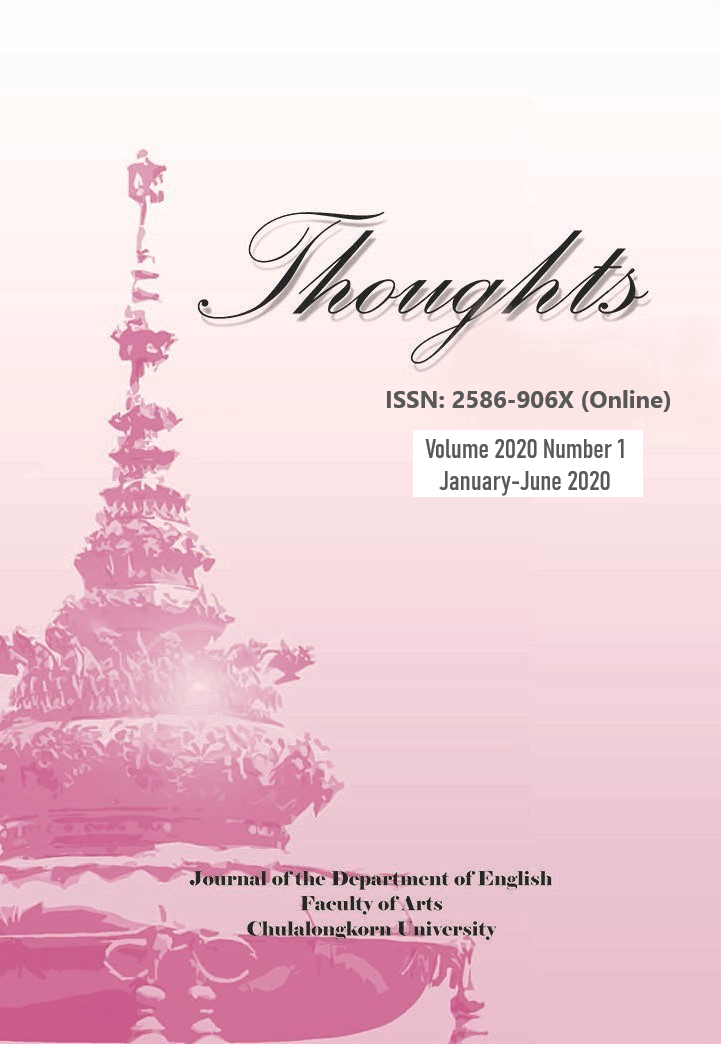The Linguistic Characteristics in Anti-aging Cosmetic Advertisements
DOI:
https://doi.org/10.58837/CHULA.THTS.2020.1.4Abstract
Advertisement language, as one variety in the field of register, holds its own characteristics. The success of an advertisement relies on a lot of factors, among which language adopted in the advertisement cannot be ignored. This research aimed to analyze the most frequent linguistic characteristics that appear in anti-aging cosmetic advertisements. The study analyzed 50 samples, which were selected online at random. The results of this research indicated that some “fighting” words, imperative sentences, metaphors, and exaggerations were four notable linguistic characteristics that possess the highest frequency in anti-aging cosmetic advertisements, with “fighting” vocabulary as the most distinctive. The finding of those “fighting” words in anti-aging cosmetic advertisements can be seen as a novel discovery, which has not been noted in previous studies. Those four salient features could hold persuasive, appealing, impressive, and influential effects, and in turn, they work together to attain a successful advertisement. The findings in this research can contribute to register study and have practical implications for manufacturers or those interested in the relationship between language and marketing on how to use language to deliver impressive, appealing, and successful advertisements.
References
Allan, K. (2008). Metaphor and metonymy: A diachronic approach. Wiley-Blackwell.
Arroyo, M. D. (2014). “Ageing youthfully” or the rhetoric of medical in advertising. Iberica, 28, 83-106.
Bai, Z. H. (2018). The characteristics of language in cosmetic advertisements. Theory and Practice in Language Studies, 8(7), 841-847.
Biber, D.,&Conrad, S. (2009). Register, Genre, and Style. Cambridge University Press.
Chetia, B. (2015). Rhetorical devices in English advertisement texts in India: A descriptive study. International Journal of Social Science and Humanity, 5(11), 980-984.
Dancygier, B.,&Sweetser, E. (2014). Figurative language. Cambridge University Press.
Goddard, A. (1998). The Language of Advertising. Routledge.
Honigman, R. & Castle, D. (2006). Aging and cosmetic enhancement. Clinical Interventions in Aging, 1(2), 115-119.
Kaewjumpasee, S. (2013). An analysis of linguistic features used in condominium advertisements from web pages. Humanities Journal ,20 (1), 219-240.
Lakoff, G. & Johnson, M. (1980a). Conceptual metaphor in everyday language. The Journal of Philosophy, 77(8), 453-486.
Lakoff, G., & Johnson, M. (1980b). Metaphors We Live By. University of Chicago Press.
Langan, J. (2004). Sentence skills, form B: A workbook for writers (7th ed.). McGrow-Hill Companies.
Searing, C. & Zeilig, H. (2017). Fine lines: cosmetic advertising and the perception of ageing female beauty. International Journal of Ageing and Later Life, 11(1), 7-36.
Shah, M. I.,&Saher, N. (2019). CDA of rhetorical devices used in advertisements of beauty products in Pakistani print media. News Media and Mass Communication, 77, 17-25. doi: 10.7176/NMMC/77-03
Simpson, P. (2014). Stylistics: A resource book for students (2nd ed.). Routledge.
Ulfah, Y. F. (2010). Register analysis in English movie advertisements of www. 21-cineplex.com: A sociolinguistics study [Undergraduate honors thesis, Sebelas Maret University]. CORE. https://core.ac.uk/download/pdf/ 12345338.pdf.
Downloads
Published
Issue
Section
License
Copyright (c) 2020 Thoughts

This work is licensed under a Creative Commons Attribution-NonCommercial-NoDerivatives 4.0 International License.
Copyright by the Faculty of Arts, Chulalongkorn University.
Photocopying is allowed for internal, non-commercial use only. Photocopying for other uses or for purposes other than indicated must be permitted in writing from the Faculty of Arts, Chulalongkorn University.
All views or conclusion are those of the authors of the articles and not necessarily those of the publisher or the editorial staff.


